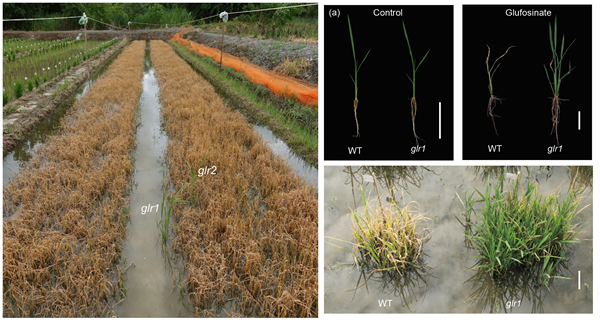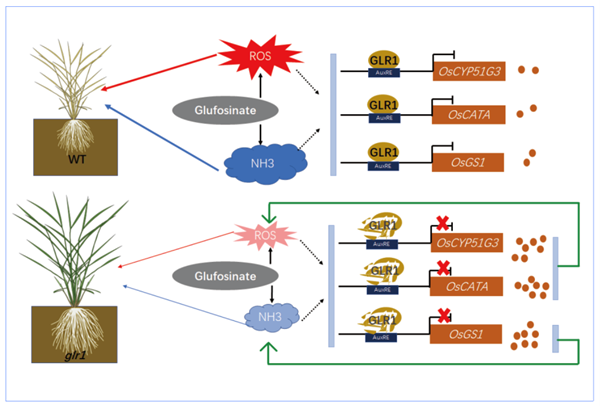
According to a research published in Plant Biotechnology Journal recently, a group of researchers led by Prof. WU Yuejin from Hefei Institutes of Physical Science (HFIPS), Chinese Academy of Sciences (CAS) successfully cloned a novel gene responsible for glufosinate resistance in rice and conducted in-depth analysis of its functional characteristics.
Breeding and researching herbicide-resistant rice germplasm holds significant potential for effective weed management and the advancement of modern agriculture. Glufosinate has been widely used due to its non-selective broad-spectrum and high-efficiency weed control. There have been very few reports on rice germplasm that are resistant to the glufosinate herbicide. Therefore, creating glufosinate-resistant rice germplasm is essential for modern agriculture.
In this study, rice seeds were subjected to heavy ion irradiation and screened for resistance to glufosinate. Two individual rice plants, glr1 and glr2, were identified as exhibiting resistance. The primary focus of this research was to elucidate the resistance mechanism and gene function of the glr1 mutant.
The results demonstrated that the glr1 mutant displayed significant resistance to glufosinate. Through map-based cloning and functional analysis, researchers unveiled that the GLR1 gene encodes ARF18, which belongs to the ARF family of auxin response factors.
Additionally, the study revealed that GLR1/ARF18 can directly bind to the promoters of downstream genes, namely OsGS1, OsCYP51G3, and OsCATA, consequently inhibiting their expression. In the wild type, treatment with glufosinate prompted the activation of the GLR1 gene, resulting in the suppression of downstream genes associated with the clearance of ammonia and reactive oxygen species (ROS). This hindrance in timely clearing of accumulated ammonia and ROS within the plant ultimately led to its demise. Conversely, when the GLR1 gene is mutated, its ability to inhibit the expression of relevant genes is impaired. As a result, the proteins encoded by these genes remain active, facilitating the efficient clearance of accumulated ammonia and ROS. This, in turn, prevents plant damage and death.
This work provides gene resources and theoretical basis for the cultivation of new rice varieties adapted to the growth conditions of adversity.

Figure1. Glufosinate screening for glufosinate resistance rice and glufosinate tolerance of WT and glr1. (Image by YE Yafeng)

Figure2. A proposed working model of GLR1 in the regulation of glufosinate resistance. (Image by YE Yafeng)